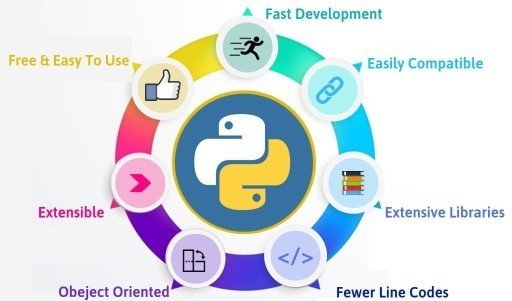
Python is a high-level, interpreted, and general-purpose programming language known for its simplicity, readability, and versatility. Created by Guido van Rossum and first released in 1991, Python has rapidly gained popularity and is widely used in various fields, including web development, data science, artificial intelligence, scientific computing, automation, and more. It is an open-source language, which means its source code is freely available for anyone to use, modify, and distribute.
Here are some key features and characteristics of Python:
Readable and Expressive Syntax:
Python’s syntax is designed to be clear, concise, and readable, making it easier for developers to write and understand code. Its use of whitespace indentation, rather than braces, enhances code readability and enforces a consistent coding style.
Interpreted Language:
Python is an interpreted language, which means that the code is executed line-by-line by an interpreter at runtime. This allows for rapid development and prototyping, as there is no need for compilation before executing the code.
Versatility and Portability:
Python is a cross-platform language, which means it can run on various operating systems, including Windows, macOS, and Linux. This portability allows developers to write code on one platform and execute it on another without modification.
Extensive Standard Library:
Python comes with a comprehensive standard library that provides a wide range of modules and packages for common tasks, such as file I/O, networking, regular expressions, data manipulation, and more. This extensive library reduces the need for external dependencies and simplifies development.
Third-Party Libraries and Frameworks:
Python has a rich ecosystem of third-party libraries and frameworks, contributing to its versatility. For web development, Flask and Django are popular frameworks, while NumPy, Pandas, and SciPy are widely used for data analysis and scientific computing.
Object-Oriented Programming (OOP):
Python supports object-oriented programming principles, allowing developers to create reusable and modular code by organizing data and functionality into objects.
Dynamic Typing:
Python is dynamically typed, meaning variable types are determined at runtime. This provides flexibility and simplifies coding, but also requires careful attention to data types to avoid runtime errors.
Community and Support:
Python has a large and active community of developers who contribute to its development, provide support, and create a wealth of resources, including documentation, tutorials, and forums.
Easy Learning Curve:
Python’s simplicity and readability make it an excellent choice for beginners in programming. Its ease of learning encourages new developers to quickly grasp the language and start building projects.
Overall, Python’s combination of simplicity, versatility, and strong community support has made it a favorite among developers for a wide range of applications, making it one of the most popular programming languages in use today.
